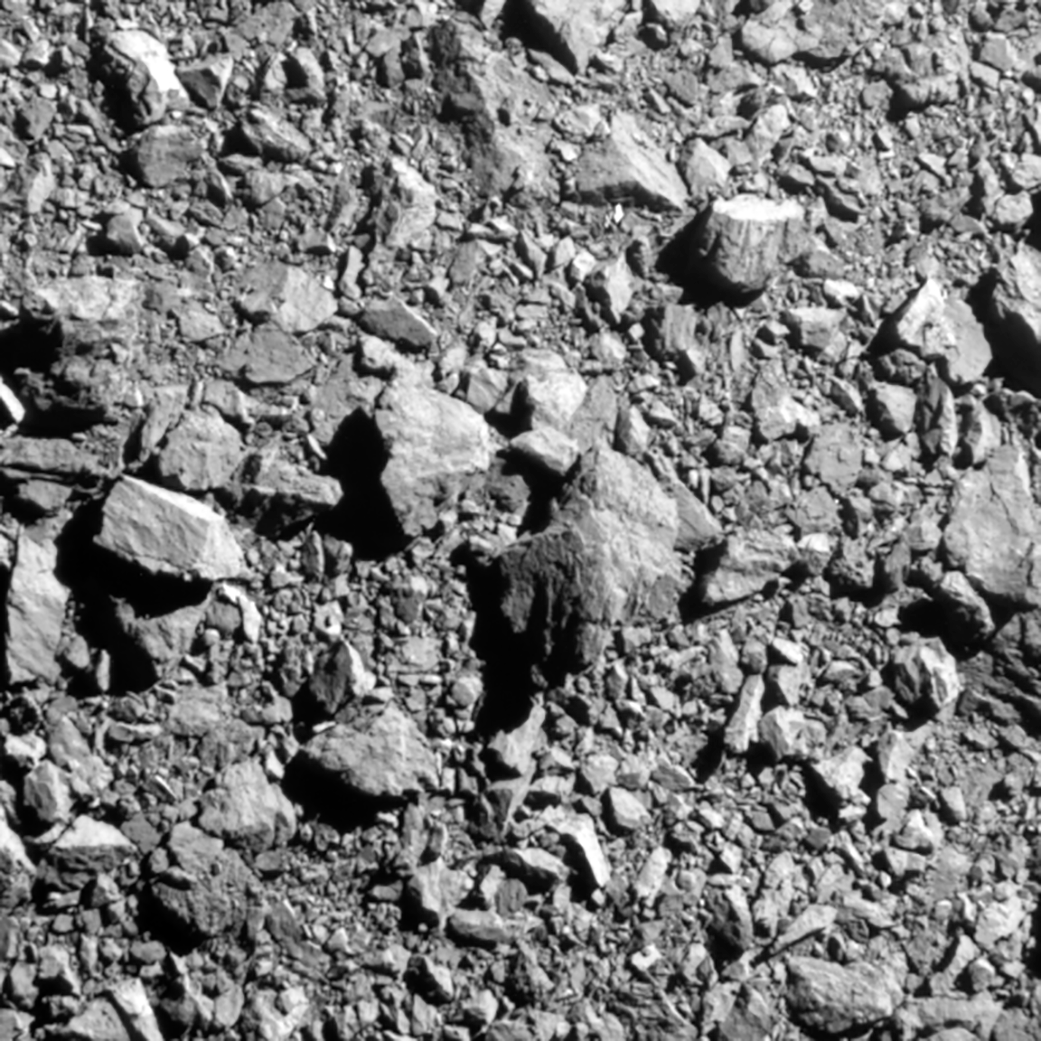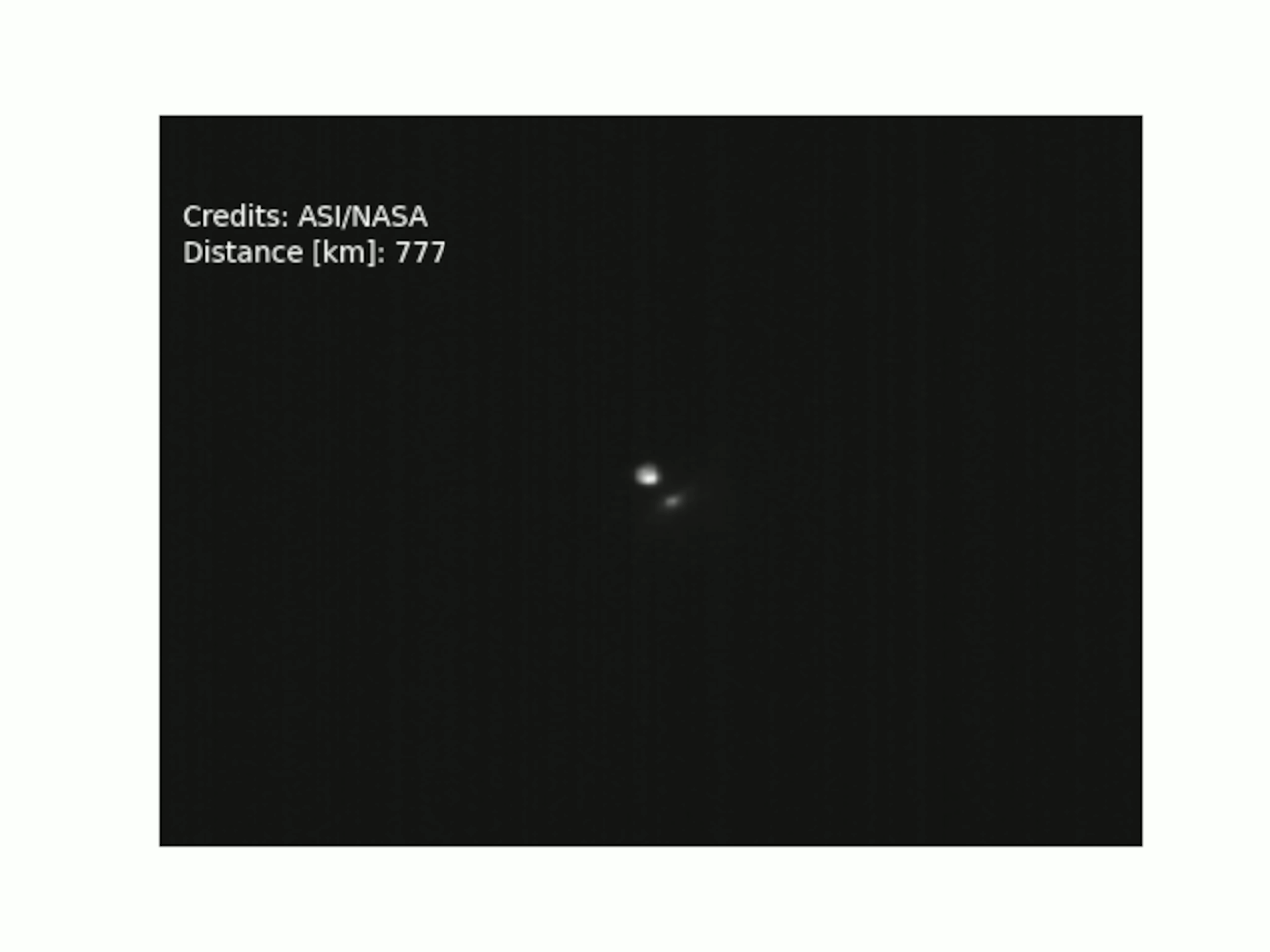Editor’s Note: This feature was updated Feb. 8 to include a quote from the Johns Hopkins Applied Physics Laboratory.
NASA’s Double Asteroid Redirection Test (DART) team has been selected to receive the 2023 Space Achievement Award, a top award from the Space Foundation. This annual award recognizes individuals or organizations that have demonstrated breakthrough space technology or program success representing milestones in space exploration.

“Congratulations to NASA’s DART team and to our partners around the world who helped to make this mission a success,” said NASA Administrator Bill Nelson. “DART was a watershed moment for planetary defense. NASA will continue to build on that legacy to be ready for whatever the universe throws at us!”
The award will be presented at the Space Foundation’s yearly opening ceremony of the Space Symposium in Colorado on April 17.
“As a first-of-its-kind research mission for planetary defense, DART was another sterling example of the global teamwork and expertise required to make the unimaginable possible,” said Space Foundation CEO Tom Zelibor. “This mission proves that there is no place humanity cannot touch when we work together for common purposes. The entirety of the DART team is to be commended for their extraordinary work in planetary defense and research.”
NASA’s DART spacecraft launched on a SpaceX Falcon 9 rocket from Vandenberg Space Force Base in California and successfully impacted its target asteroid, Dimorphos, on Sept. 26, 2022. While Dimorphos posed no hazard to Earth, DART’s successful collision with the asteroid demonstrated one method of asteroid deflection using kinetic impactor technology.

Immediately following DART’s impact, the team began analyzing imagery returned by DART’s onboard Didymos Reconnaissance and Asteroid Camera for Optical navigation (DRACO) camera, the Italian Space Agency’s Light Italian CubeSat for Imaging of Asteroids (LICIACube), which deployed from DART to capture images of the spacecraft’s impact and resulting cloud of ejected matter from the asteroid. The team also is analyzing imagery from NASA’s James Webb Space Telescope, Hubble Space Telescope, and Lucy spacecraft, which simultaneously captured observations of the DART impact on the surface of the small asteroid moonlet in the double-asteroid system Didymos.
Following the collision with the asteroid, the team continued to obtain and analyze data from ground-based telescopes and radar facilities around the world to understand the efficiency of momentum transfer from DART’s roughly 14,000-mile (22,530-kilometer) per hour collision with its target. These data, in tandem with the images returned by DRACO, LICIACube, Webb, Hubble, and Lucy are helping scientists understand the nature of the surface of Dimorphos, how much material was ejected by the collision, how fast it was ejected, as well as the distribution of particle sizes in the expanding dust cloud to ultimately determine how effectively a kinetic impactor spacecraft can modify an asteroid’s orbit.
“The international collaboration of NASA’s DART mission with ASI’s LICIACube, along with data collected by observers around the world of the impact results shows the global nature of protecting our planet from hazardous near-Earth objects,” said Sandra Connelly, acting associate administrator for the Science Mission Directorate at NASA Headquarters. “Working together, our planetary defense efforts can both advance our ability to respond to an asteroid on a collision course with Earth should one ever be discovered, as well as unite us behind the common goal of protecting our planet and its inhabitants.”
“Congratulations to the DART team on this well-deserved recognition,” said Bobby Braun, head of the Space Exploration Sector at the Johns Hopkins Applied Physics Laboratory (APL). “These talented scientists and engineers should be proud of their critical contributions in developing and operating humanity’s first planetary defense test mission.”
Recent winners of the Space Achievement Award include the International Astronautical Federation, U.S. Space Force, and International Space Station Partners. The Space Foundation also recognized NASA’s James Webb Space Telescope team for a top award.
Johns Hopkins APL built and operated the DART spacecraft and manages the DART mission for NASA’s Planetary Defense Coordination Office as a project of the agency’s Planetary Missions Program Office. Since DART’s impact with its target asteroid, telescopic and radar facilities contributed observations used by the DART team to confirm by how much DART altered Dimorphos’ speed and path.
For more information about the DART mission, visit:
https://science.nasa.gov/mission/dart/
– end –
Natasha Pinol
Headquarters, Washington
202-358-0930
natasha.r.pinol@nasa.gov



























